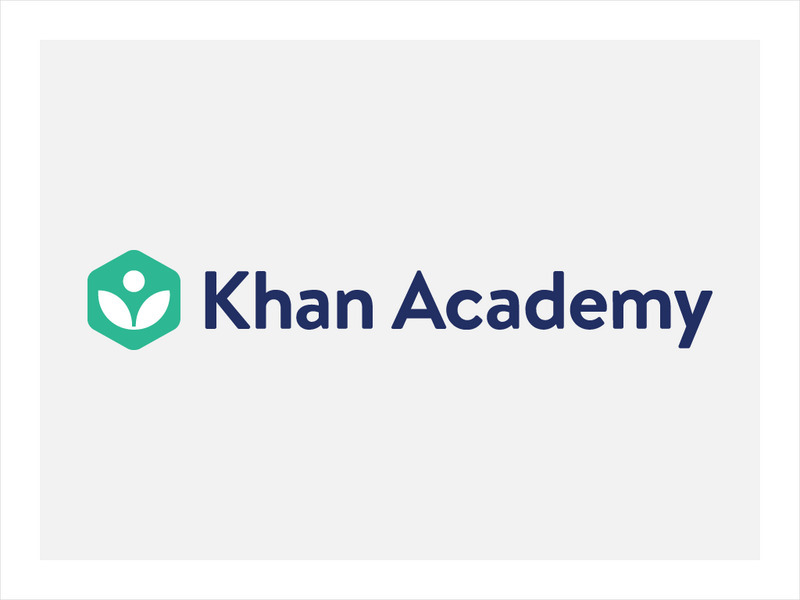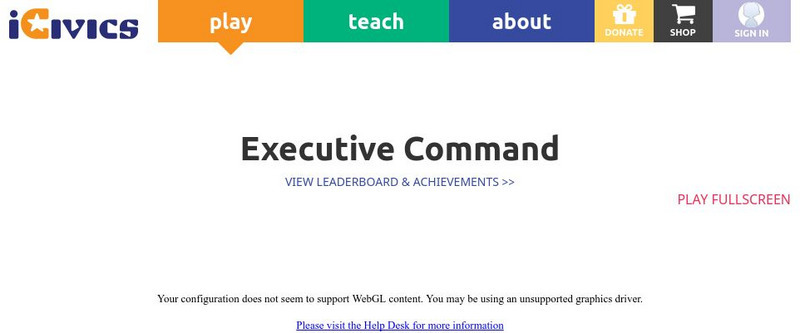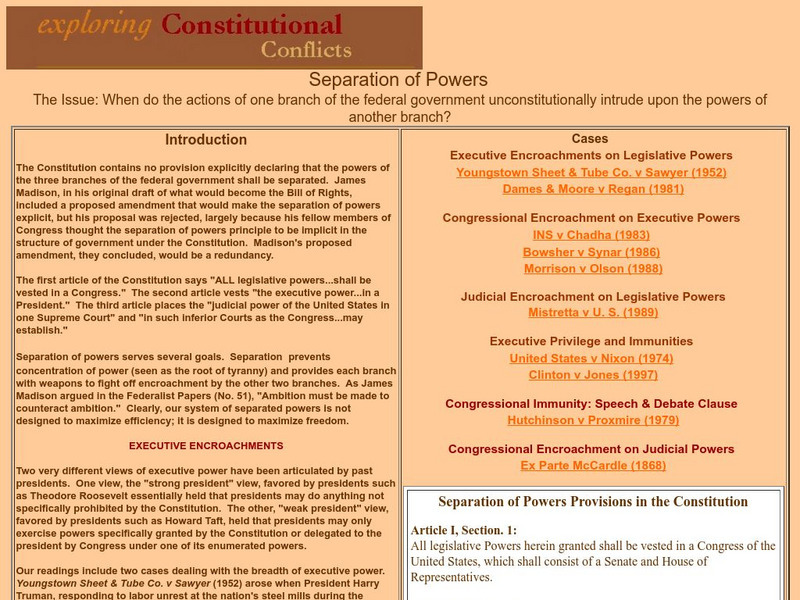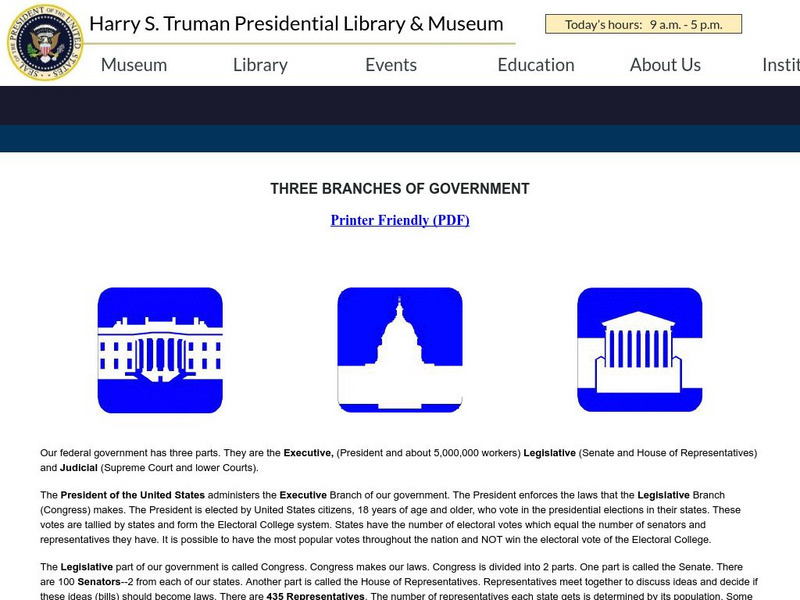The White House
The White House: The Executive Branch
Learn about the executive branch of the federal government, how it is organized, and the powers and responsibilities of the President, Vice President, the Executive Office of the President, and the departments within the Cabinet.
iCivics
I Civics: Executive Branch
Students will learn about the executive branch, including the unique role and powers of the president and the function of executive departments and agencies. They will explore key facets of foreign policy and the president's role in it....
Shmoop University
Shmoop: Executive Branch and Presidents
Basic information and key concepts about the Executive Branch and Presidents. Also available from the orange tabs on top: a few interesting stories on the history, a timeline that shows the development of the presidency, some quotes and...
Constitutional Rights Foundation
Constitutional Rights Foundation: Executive Branch: A Hero Betrayed: The Presidency of Ulysses S. Grant
Lesson with activity on the Executive Branch, distribution of power, scandal and the presidency of Ulysses S. Grant. Includes questions for discussion and class activity. Links to supplemental material.
Harry S. Truman Library and Museum
Harry S. Truman Library & Museum: Three Branches of Government
Interactive teaching unit for Grades 5-8 that helps to explain the three branches of government and the the balance of power. Topics covered include balance of government, how a bill becomes a law, the amendment process, the Legislative...
iCivics
I Civics: Games: Branches of Power
Interactive and educational game puts players in control of all three branches of government and tests their abilities to turn issues of concern into full-fledged laws.
US National Archives
National Archives: Lesson Plans Congress, the President, and the War Powers
Examine the power of Congress to make war by studying primary source documents from various wars throughout U.S. history. Students will analyze how the balance of authority between the legislative branch and executive branch has changed...
Khan Academy
Khan Academy: Roles and Powers of the President: Advanced
This resource from Khan Academy provides advanced-level practice questions over roles and powers of the president. These questions are intended for students taking high school or college level American Government and Civics courses,...
Khan Academy
Khan Academy: Roles and Powers of the President: Foundational
This resource from Khan Academy provides foundational practice questions the roles and powers of the president. These questions are intended for students taking high school or college level American Government and Civics courses,...
iCivics
I Civics: Separation of Powers: What's for Lunch?
Learners find out how the three branches of government interact with each other and how decisions about laws are made by several parts of the U.S. government.
Khan Academy
Khan Academy: Expansion of Presidential Power: Foundational
This resource from Khan Academy provides foundational-level practice questions over the expansion of presidential power. These questions are intended for students taking high school or college level American Government and Civics...
iCivics
I Civics: Games: Executive Command
Have you ever thought about being president? Executive Command gives you four years in office to accomplish your legislative and policy goals. You'll make a state-of-the-union address, work with your aides and cabinet, try your hand at...
University of Missouri
Exploring Constitutional Conflicts: Separation of Powers
When do the actions of one branch of the federal government unconstitutionally intrude upon the powers of another branch? This article surveys the history of this question in historic Supreme Court cases.
This Nation
This nation.com: Executive Order 13132 of August 4, 1999
This Executive Order signed by President Bill Clinton on 8/4/99 is an order that describes the balance between state and federal governments, as warranted by the Framers of the Constitution and federalism.
Utah Education Network
Uen: Themepark: Liberty: Three Branches of Government
Find a large collection of internet resources organized around the three branches of government. Links to places to go, people to see, things to do, teacher resources, and bibliographies.
TED Talks
Ted: Ted Ed: How Do Executive Orders Work?
The framers of the American Constitution made the executive power available to the executive branch. But what exactly is this tool, how does it work, and what's the extent of its power? Christina Greer explains.
Thomson Reuters
Find Law: Article Ii: The Creation of the Presidency
A scholarly discussion of Article II of the U.S. Constitution, which establishes the executive branch of the U.S. government. Discusses the origin of the article and the debates on executive power that took place among the Founding...
Yale University
Avalon Project: Constitution of the United States: Article Ii
Read the text of Article II of the Constitution, the four sections of which lay out the powers and duties of the executive branch of the federal government.
iCivics
I Civics: For the President, All in a Day's Work
Students learn the primary responsibilities of the president and how those duties connect to the powers the Constitution grants to the Executive Branch.
PBS
Pbs Learning Media: The Powers of Government
Students learn how the three branches of the United States government work together and the powers that the Constitution assigns to each branch-legislative, executive, and judicial.
Harry S. Truman Library and Museum
Harry S. Truman Library & Museum: Three Branches of Our Government
This slide and the six that follow it (use the advance button near the bottom of the screen) offer an explanation of each of the three branches of government and the duties they perform, including discussion of the tensions arising from...
US Government Publishing Office
Ben's Guide to u.s. Government: Branches of Government
A brief overview of the origins of the three branches of the federal government, with links to more in-depth information about each branch. Also discusses the concerns of the Founding Fathers about creating a government that had...
iCivics
I Civics: Mini Lesson: Executive Orders
Students discover how presidents use executive orders to wield power and how the legislative and judicial branches support and challenge these measures.
Thomson Reuters
Find Law: Article Ii: Presidential Power to Use Troops
In-depth analysis of the use of presidential power to send troops abroad without consent of Congress.


















